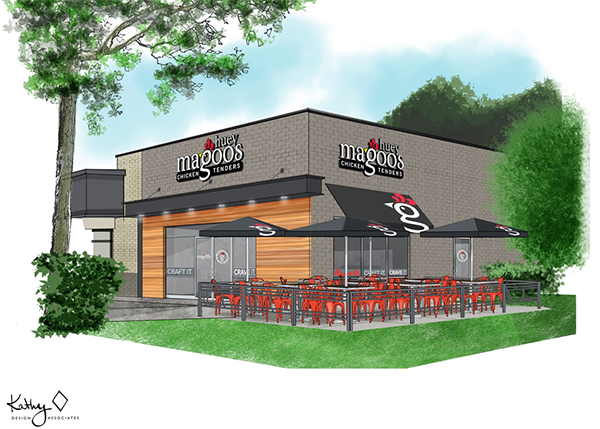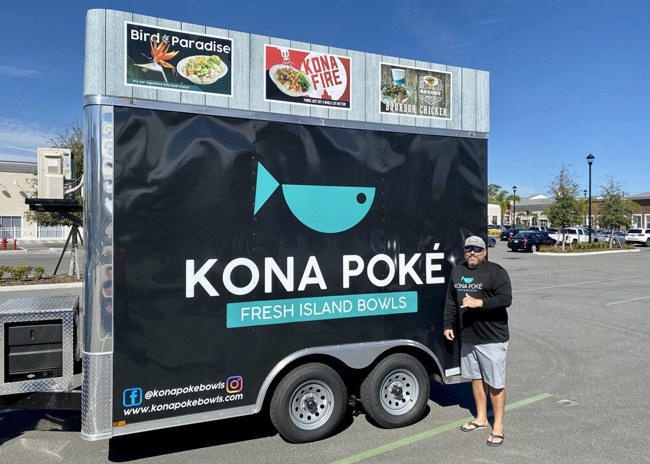Hospitality spaces often present a specific set of engineering challenges for contractors, requiring you to create cost savings while still delivering the client’s original design vision.
 ROB MESCOLOTTO, Hospitality Construction Services www.hospitalitygc.comAs founder and owner of a D.C.-based general contractor specializing in hospitality construction, I navigate these challenges by utilizing value engineering for all projects. It’s a critical part of the process of being able to achieve the design that clients have imagined at what can be a fraction of the cost of what the project would have been without smart value engineering.
ROB MESCOLOTTO, Hospitality Construction Services www.hospitalitygc.comAs founder and owner of a D.C.-based general contractor specializing in hospitality construction, I navigate these challenges by utilizing value engineering for all projects. It’s a critical part of the process of being able to achieve the design that clients have imagined at what can be a fraction of the cost of what the project would have been without smart value engineering.
The process starts with making sure the project team has all of the necessary information to make educated decisions that will maximize the client’s project requirements and budget constraints. Then, we apply the art and science of value engineering — while making no perceivable changes — to reduce the overall cost of construction by selectively modifying materials and methods. That, after all, is the essence of value engineering.
Over the years, we’ve developed an approach that characterizes potential savings on projects in three ways, depending on how flexible the client is willing to be during the value-engineering process:
- Up to 10 percent savings: Clients earn 10 percent savings on a project through making smart up-front design choices and decisions.
- Up to 20 percent savings: To achieve this level of savings, clients need to be aggressive and creative with the design concept and construction of the project, thoughtfully taking material selection and construction methods into consideration and being willing to make substitutions.
- 20-plus percent savings: If clients aim for more than 20 percent savings on estimated costs, they may want to reevaluate their vision for the project. Because many material and method choices will have to be scrapped to meet budget constraints, the project will not look like the original design.
- I have a process I like to use to maintain the design concept, respect the architect’s vision and save the client money. Below, I share some of the tips and tricks that help me, restaurant clients and key players throughout the entire process of value engineering restaurants.
 At Kapnos Taverna, value engineering led to replacing the subway tile initially specified for the interior walls of the open kitchen with fiber-reinforced plastic tiles, which created the same look at a fraction of the cost. Photo by Jim Cuddy & Mathew Lynch
At Kapnos Taverna, value engineering led to replacing the subway tile initially specified for the interior walls of the open kitchen with fiber-reinforced plastic tiles, which created the same look at a fraction of the cost. Photo by Jim Cuddy & Mathew Lynch
Identify What Is Off Limits
As owners and clients you should provide the contractor with a list of the products and materials you absolutely want to keep in the project. This ensures if there is something you’re really attached to, it doesn’t get involved in the value-engineering process. In this step, it’s important to remember that it’s not always the big items that help save money, but rather saving money on a number of different products and materials that can make a real impact.
What to consider when evaluating what is off limits:
- Will the product be visible within the space? Hidden products and materials are often the easiest to substitute because they don’t have a direct effect on the guest’s experience. For example, in the case of plumbing, using PVC pipes instead of copper or cast iron versions may provide substantial savings.
- If it will be seen, what are you willing to substitute? Evaluate every project for ways to substitute one product for another so as to provide something that’s similar in appearance yet more budget friendly. For example, at Kapnos Taverna, a Mediterranean restaurant in Arlington, Va., the client wanted to use subway tiles in the display kitchen area. Since the area in question was somewhat concealed, however, we saw the opportunity to lower cost and instead sourced fiber-reinforced plastic tiles that achieved the desired look at a fraction of the cost.
- Are you getting the best price possible on your must-have items? A good general contractor will be able to tell you and will know which vendors have the best prices on many items. Rely on them to help you find the materials you’ve specified for significantly less than you might otherwise get them.
- Assemble the Right Team
For general contractors, it’s important to get to know the architects, owners and subcontractors you are working with. Involving key team members throughout the development and construction process for every project creates an open dialogue and helps to ensure that everyone is on the same page throughout the design and value-engineering process.
Prior to these meetings, the contractor should:
- Interview subcontractors to find the best fit for the project and get their ideas for coming in under budget.
- Take the time to identify the architect’s intent and involve them in the process. The architect works with the client from the beginning of the design process and develops a design concept that relates intimately to the owner’s objectives. By understanding the architect’s intent, a general contractor can better work within the design parameters, delivering a final product that meets the design objectives, while staying on budget.
- Identify potential material substitutions before team meetings. During these meetings, the owner and architect should be able to see and discuss a variety of examples of potential savings through material substitutions.
Present a Value-Engineering Menu
Taking that last point a step further, create a value-engineering menu, which in this instance translates into a formalized list of potential substitutions compared to the original materials or methods specified, and detail the savings that could be realized. This enables the client to make clear and cost-effective decisions regarding the construction of the project. Architects can also use this list to tailor the project and regularly offer compromises to the client.
When discussing the menu with the client and architect, the contractor should be prepared to bring samples and make a case for the substitutions that they recommend. Seeing is believing: being able to look at and touch potential substitutions, as well as review fact-based pricing comparisons, greatly increases a client’s comfort level and can speed the decision-making process.
On the operator side, go into the value-engineering process with an open mind and take the time to consider the menu of options. Why? You may be in love with a particular product, but something as simple as using a different type of wood can make a major difference in the budget. For example, we had a client who specified heart pine wood for their restaurant. After going through our value-engineering process, we were able to make the case that by staining Douglas fir wood instead they could achieve the same look at a cost savings of more than $50,000. Every restaurant project offers similar opportunities for savings through strategic value engineering. Consider the original design and specifications as a starting point and then put the process to work. Ultimately, you can create a design that is both aesthetically pleasing and budget friendly.



